Tokyo is huge! With a metropolitan population of 37 million in the Greater Tokyo Area, covering a space 40% larger than London, exploring the Japanese capital is no mean feat. Hopefully, this guide will prove useful in helping you to maximise your time in this truly unique urban jungle as you navigate the disorientating, yet utterly incredible mega city that is…東京都!
When you search for Tokyo on Google Maps, you are presented with this on your screen…
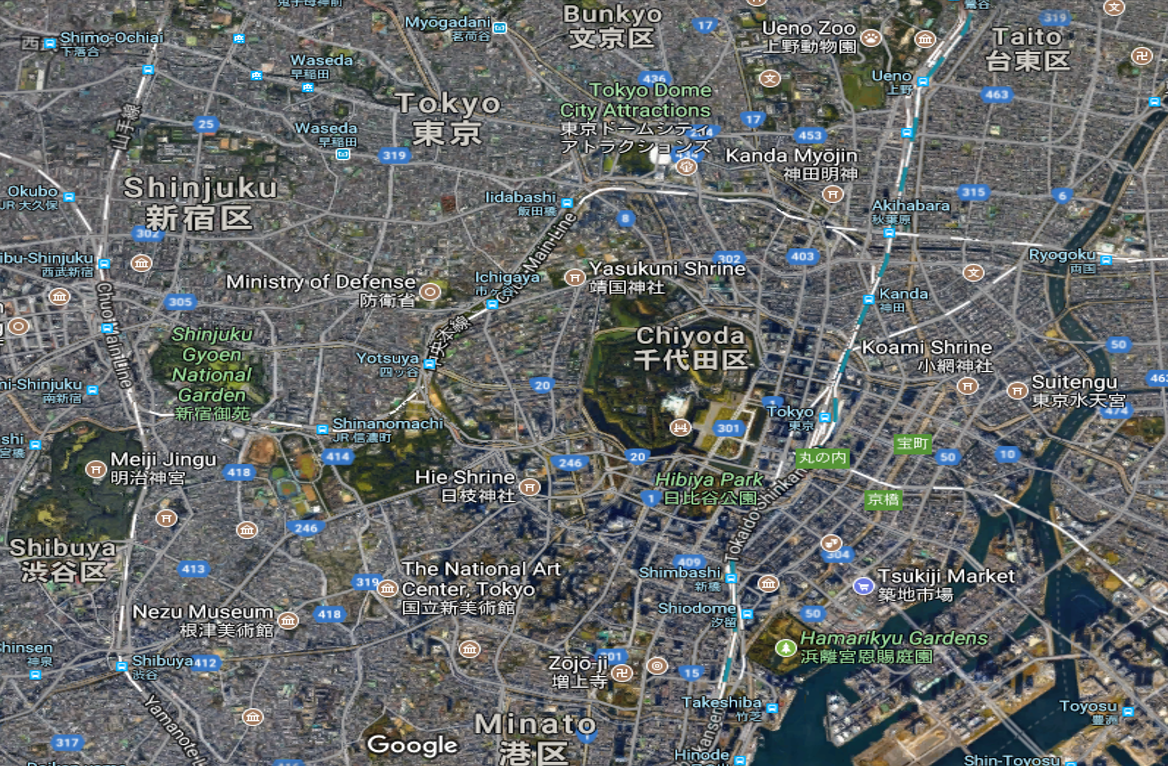
うわー!Where do I begin?! (source – Google Maps)
Accommodation
On seeing this map, my first reaction (after picking my jaw up from the floor) was to decide where to base myself in order to see as much as I could. My advice would be to stay within walking distance of a station on Japan Rail’s Yamanote Line. The line pretty much loops the city and many of its stations are the closest to Tokyo’s most popular and best attractions. I opted to stay in the cosy, yet comfortable Imano; a hostel near to one of the city’s busiest and important transport hubs, Shinjuku Station. Shinjuku itself is a sight to behold. The station offers links via 11 other lines that take you around the city and beyond as well as a huge range of shops and restaurants. In addition to this, you can witness (and experience) first hand how the vast numbers of commuters squeeze onto the train and subway carriages at rush hour and test your map reading skills by attempting to leave the exit you actually wanted instead of one of the 200 other exits you didn’t want!

Get in the loop! (source – thaipublica.org)
…Time to Explore The City
After dropping your luggage at your accommodation, you’ll be keen to get out there to be blinded by the neon lights, get a taste of the local sushi, some hot katsu curry and to swig a few bottles of refreshing Japanese beer, but to take your first steps out onto the bustling streets without a plan might be a mistake. To make the most of your trip, it would be wise to view Tokyo as a series of districts (Akihabara, Shibuya and Asakusa are but a few of the many within the city); each with their own distinct characteristics and attractions. And, to do each district justice and really get the most out of these areas, I would recommend exploring no more than 2-3 a day.
Such is the vastness of Tokyo, public transport is a necessity in getting around. Using the public transport system (predominantly trains, the subway and buses) as a way of getting to each of the districts you want to explore is essential if you want to see what the city has to offer. It is also quite easy, thanks to English signs and the helpful staff you will encounter. The PASMO and Suica cards, two different forms of advanced electronic payment (much like London’s Oyster Card), can be obtained and topped up easily in train stations and offer the most convenient way to get around Tokyo…and can also be used to purchase items from the numerous vending machines dotted around the city as well as your shopping too.

(source – https://www.japan-rail-pass.com)

See! Tokyo is really easy to navigate! (source – Pulped Travel)
Once you reach each of these districts, you can leave the public transport behind as your best way to explore is on foot. Despite its size and reputation as a heaving metropolis rammed with traffic and hordes of pedestrians, Tokyo is a genuinely pleasant place to wander; offering amazingly beautiful sights, traditional charm and the utterly crazy…often all at once!
The Districts
So…here are my top 5 districts to check out in Tokyo…
1. Akihabara
What hits you when you step off the train in Akihabara, Tokyo’s electronic district, is an energy…huge billboards filled with anime style cartoons, writing in Japanese that covers every inch of the skyscrapers that tower over the area and cafes where you can be served by a Japanese lady dressed as a French maid! For any visitor to Tokyo, Akihabara is a real eye-opener and helps to explain many of the modern Japanese passions – notably comic books, anime related paraphernalia and gadgets. This electronics mecca will have you enthralled by its bright lights, cosplay characters and sheer volume of collectible items the locals seemingly go crazy for. I can understand how the urge to shop is strong in Akihabara. It took an incredible amount of willpower not to buy one of Japan’s brilliant automated toilet seats as a souvenir for myself here!
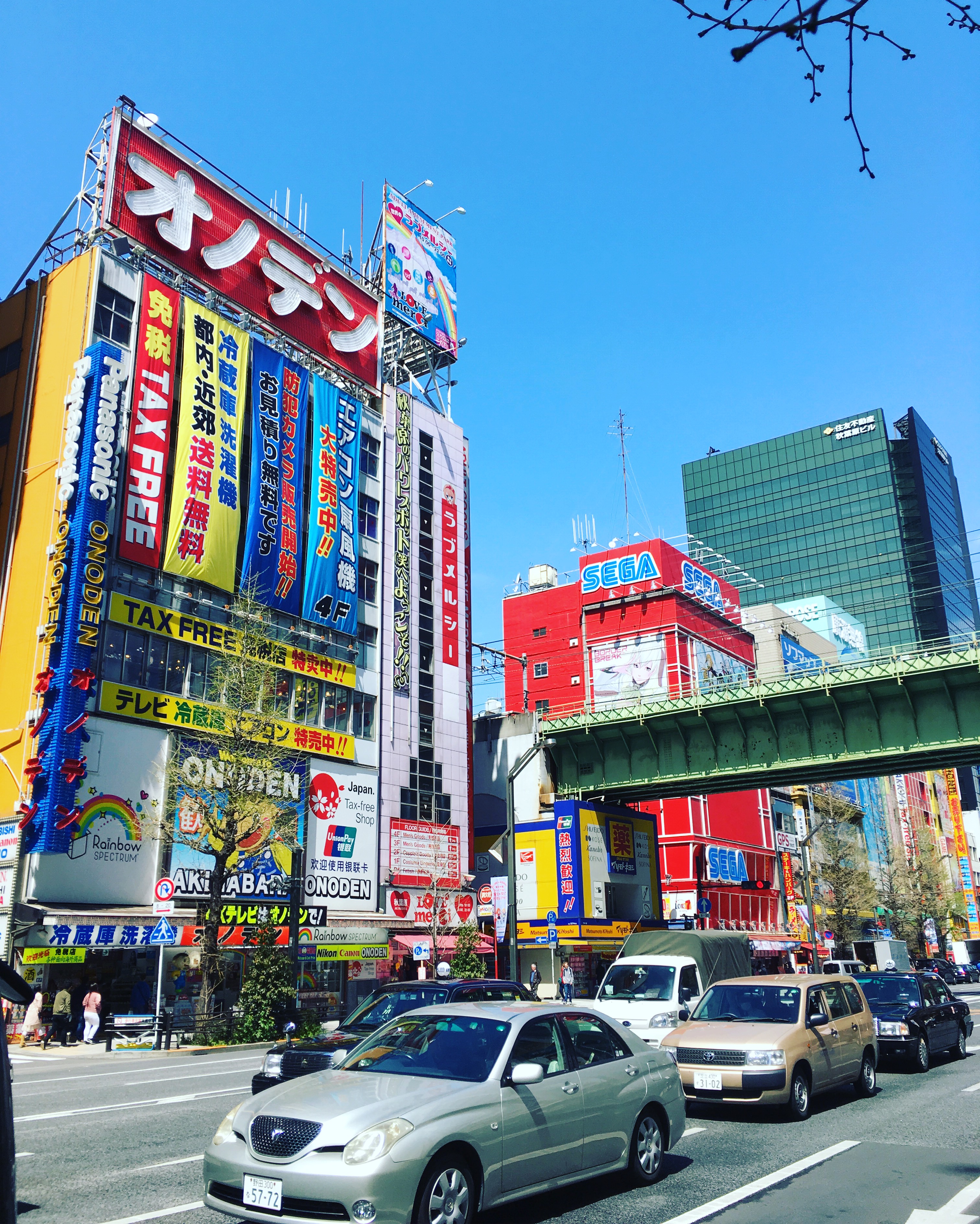
Akihabara (source – Pulped Travel)
2. Ueno
Time your trip carefully and you could be strolling through this park, down boulevards lined with the stunning sakura (cherry blossom). Directly below the delicate white and pink petals are large numbers of families, office workers and students sat upon carefully arranged blankets as they feast on bento boxes and celebrate the arrival of the first blooms of spring with hanami (cherry blossom viewing) parties. The sakura season is a big deal in Tokyo and the rest of Japan, so book ahead if you are visiting the country around mid-March to mid-April. Also, look out for when Golden Week falls. This collection of national holidays on the same week mean transportation and accommodation reservations can be difficult to obtain.
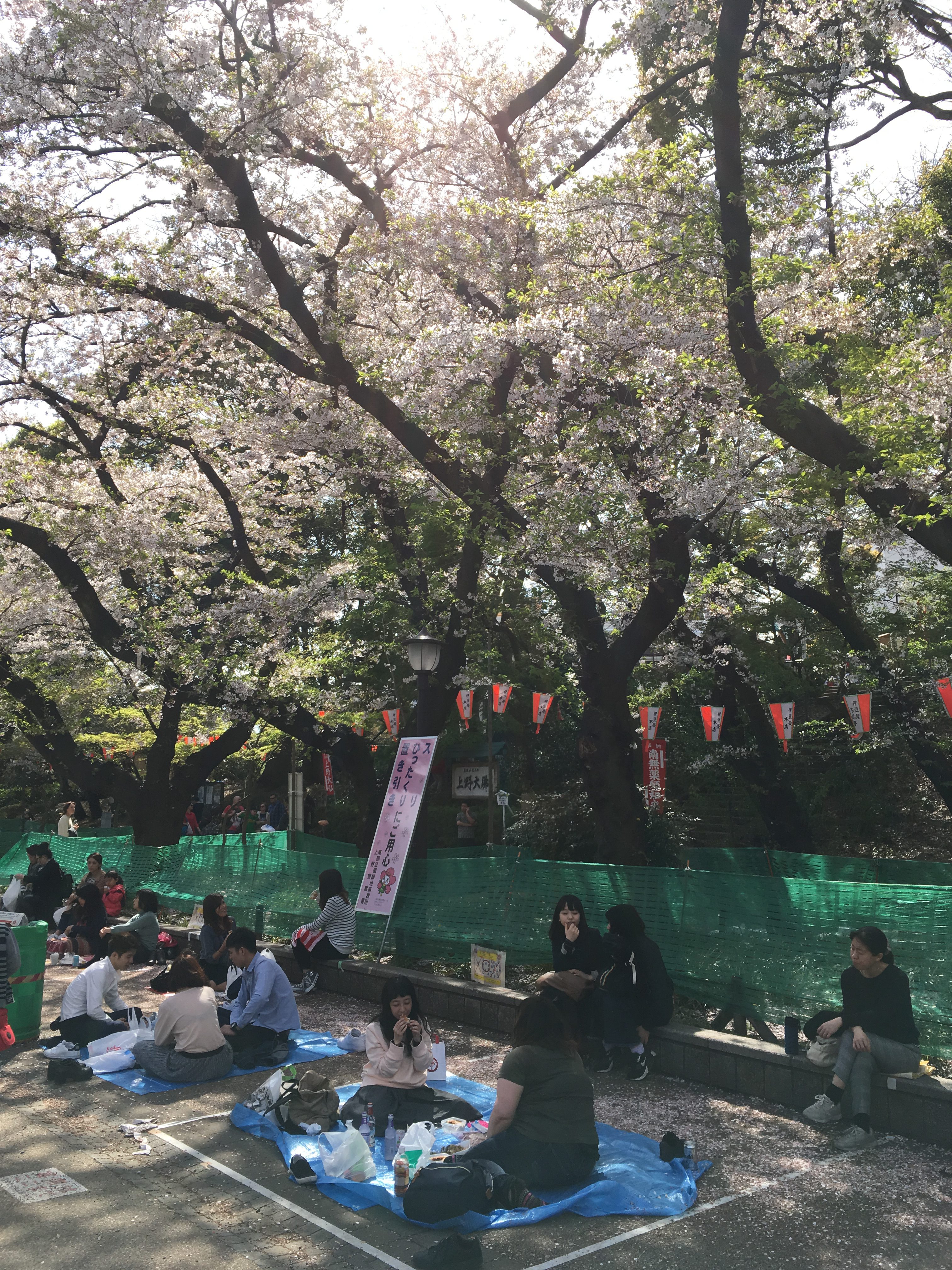
The hanami parties in Ueno Park (source – Pulped Travel)
Ueno Park is also home to Tokyo’s Metropolitan Art Museum and the National Museum of Western Art, which primarily exhibits work by European artists (including Rodin’s ‘Thinker’) in a striking Le Corbusier designed building. Stray north outside of the park (towards Nippori Station) and you will arrive at one of Tokyo’s most traditional districts, Yanaka, where you will find an old town ambience that is filled with temples, lanes that wind past art galleries and some delightfully relaxed cafes and restaurants.

The beauty of the Yanaka district in Tokyo (source – Pulped Travel)
3. Shibuya and Harajuku
I loved Shibuya and Harajuku! Situated next to each other in Tokyo, both districts are quite simply out of this world! Harajuku is a district of great contrasts. A stroll round vast Yoyogi Park will lead you to peaceful environment of The Meiji-Jingu Shrine. Next to Harajuku Station, this Shinto place of worship; despite its location in the heart of one of the world’s biggest urban areas, is a world away from the buzz of Tokyo. Offering a tranquil space, the Meiji Shrine is a must see for any visitor to the city.
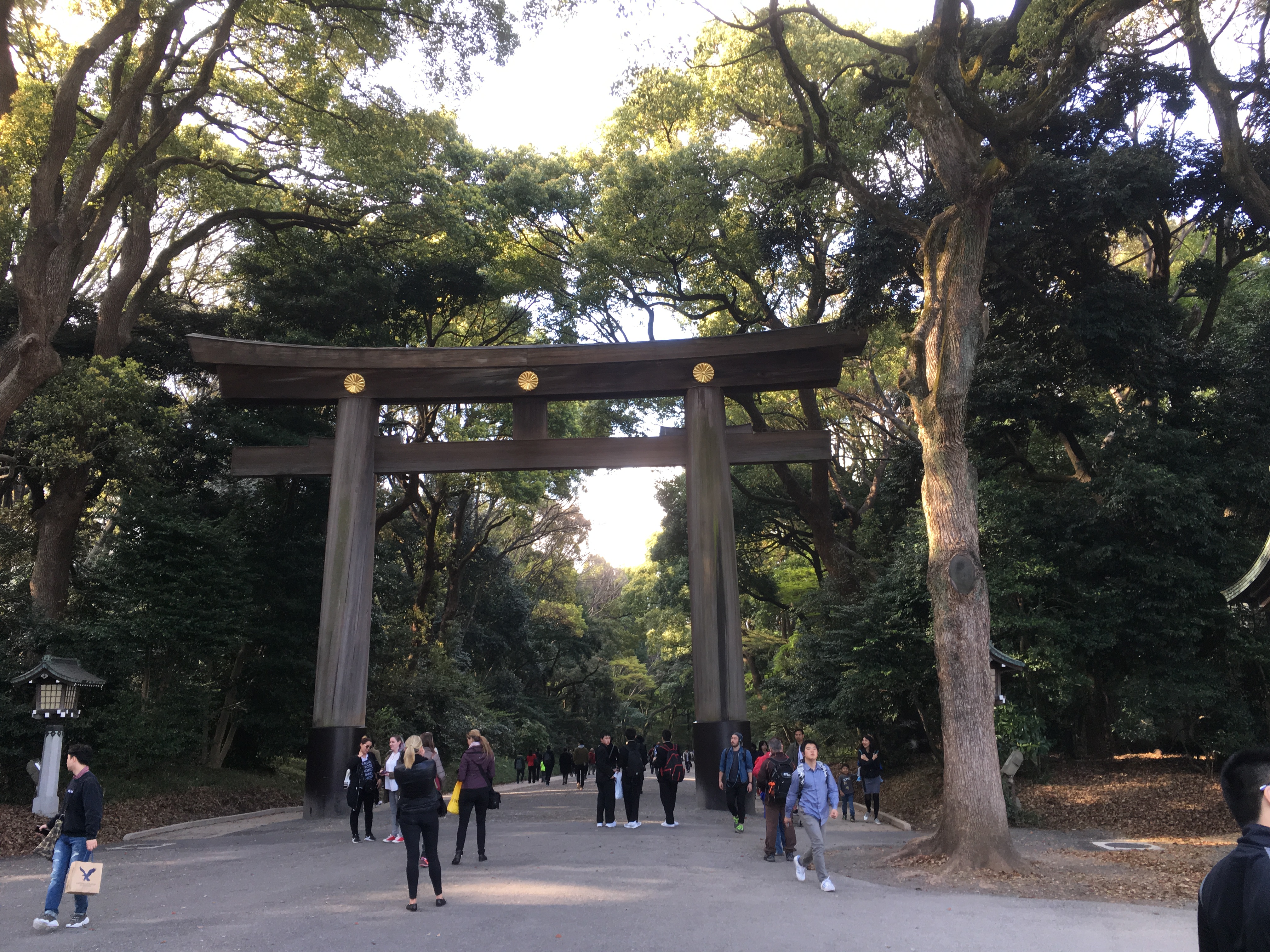
The entrance to the Meiji-Jingu Temple (source – Pulped Travel)

Casks of sake as an offering to the deities and for use during celebrations! (source – Pulped Travel)
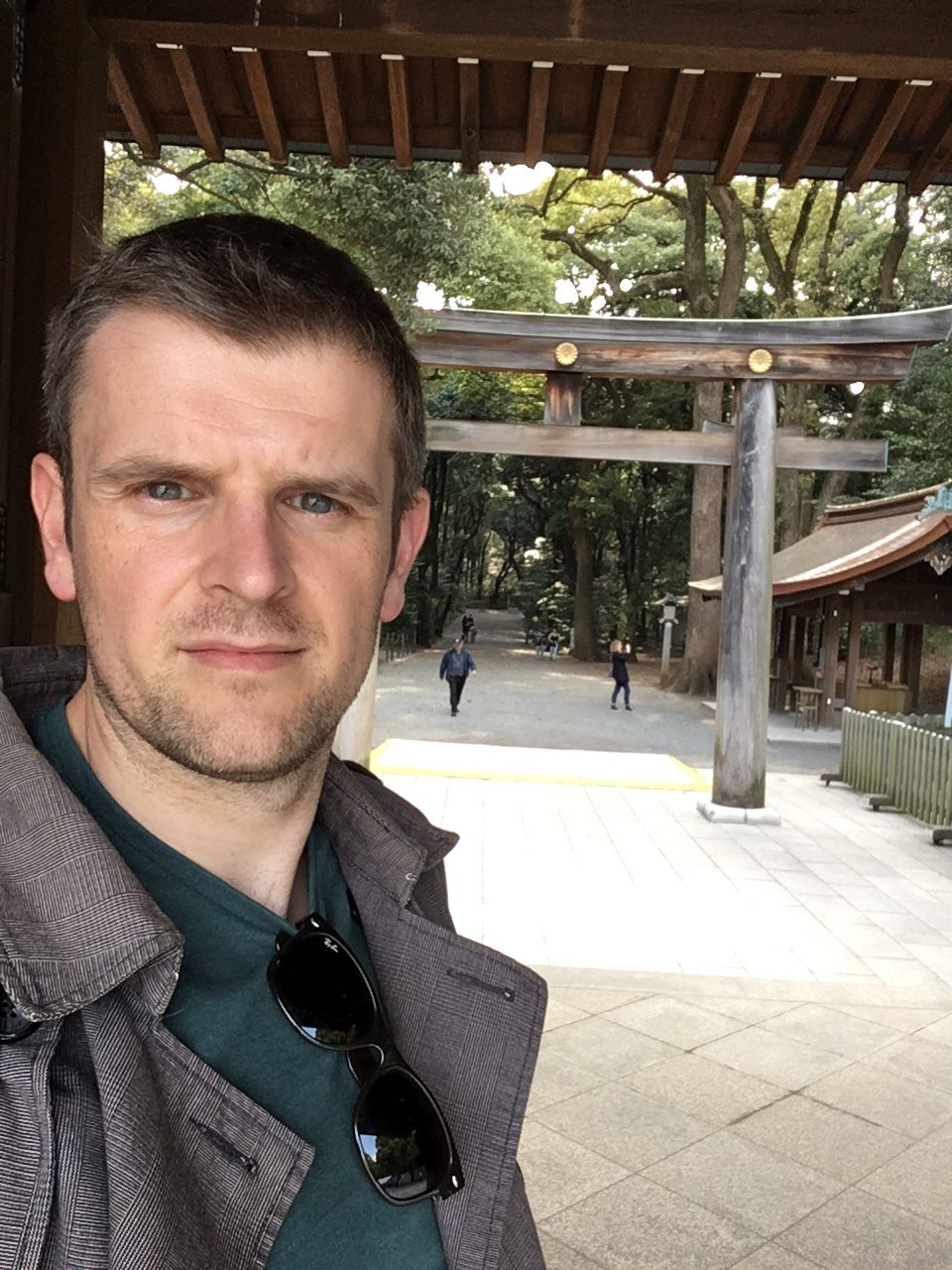
Thinking I’m at the Meiji Temple for a photoshoot! (source – Pulped Travel)
Across the road from the shrine is what has made Harajuku famous the world over…Takeshita Dori; a street lined with cafes, restaurants and fashion to please every wannabe Harajuku Girl and cosplay fan. It is quite an assault on the senses to wander down this narrow pedestrian street surrounded by colourful stores, filled with an immense array of foods and fashions to suit the wild and wonderful people of Tokyo. Head to Yoyogi Park (around the Meiji Shrine entrance) on a Sunday and you will see a whole host of locals dressed in the very costumes most of which they will have shopped for on Takeshita Dori. Above all, it is all absolutely brilliant fun and well worth spending a few hours exploring Harajuku. If you are a fan of modern architecture, take a stroll down the main streets of nearby Aoyama, home to several designer boutiques, many of whom have set up home in some of the most incredible buildings. The Italian designer brand, Prada, for example, is located in an amazing glass construction designed by world class architects Herzog & de Meuron.

Takeshita Dori in Harajuku (source – Pulped Travel)
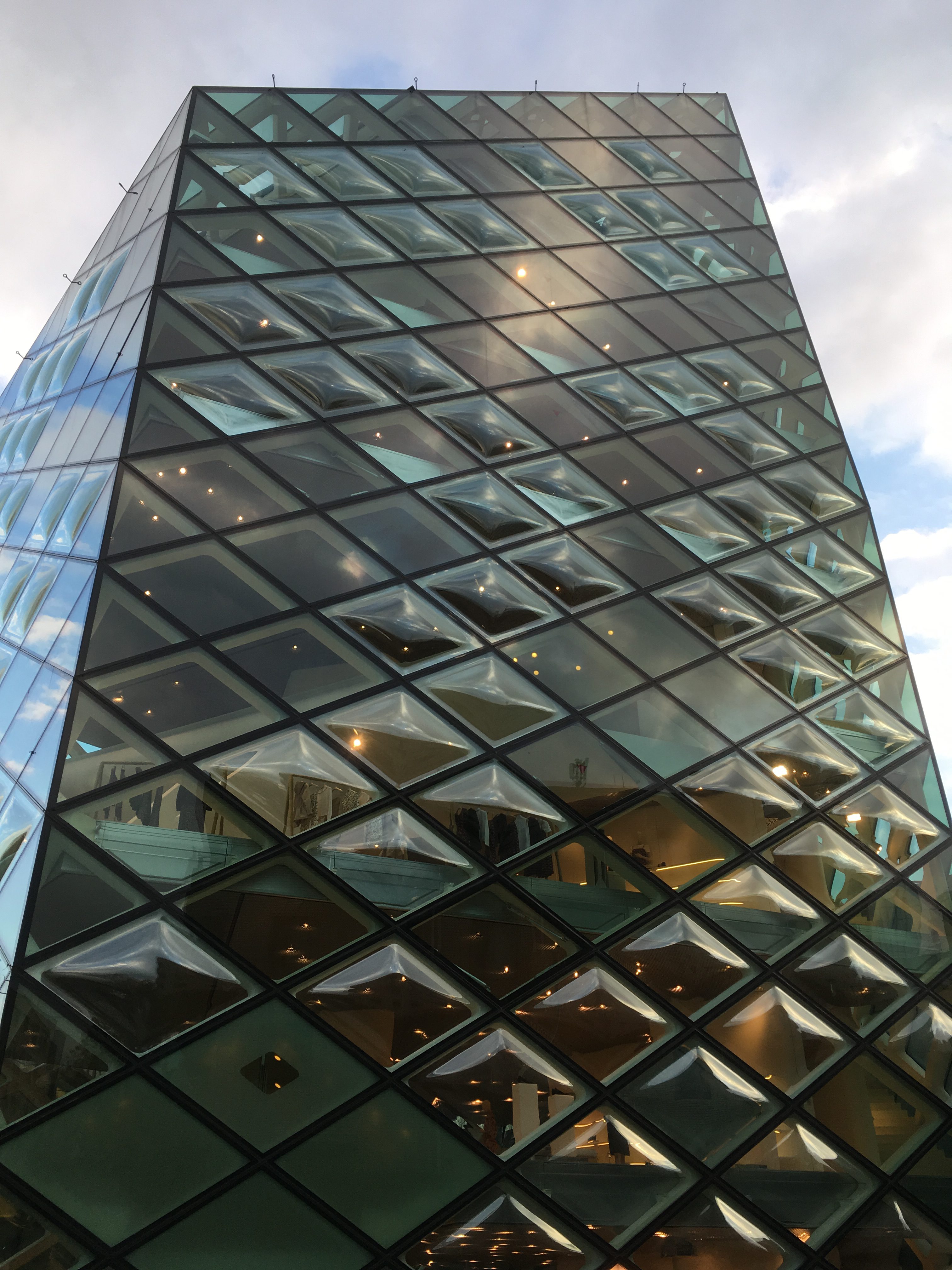
Herzog & de Meuron’s Prada building in Ayoama, Tokyo (source – Pulped Travel)
South of Harajuku brings you to Shibuya. Shibuya, like its northern neighbour, is a feast for the eyes. It is home to Tokyo’s youth culture and many of the trends that come out of Japan emerge from the fashion conscious and entertainment frenzied atmosphere of this district. The two big attractions of Shibuya are the statue of the Hachiko, a dog so loyal he waited for his master at Shibuya Station every day after work and for many years after his owner had died. The other attraction is the spectacular intersection near Shibuya Station which is swarmed with over 1000+ pedestrians all at once as soon as the lights go green. Crossing the road at the Shibuya intersection, surrounded by the floodlight neon skyscrapers as thousands of people swirl around you towards their evening’s entertainment or to catch their train from the station, is a memory I shall treasure for a long time.

Shibuya Selfie! (source – Pulped Travel)
Whilst in this district, look out for the stand up sushi bars. They offer fantastic food at a great price; especially when the prices are reduced later in the evening. Such is the pride in selling fresh fish (ie. caught that day) the sushi restaurants often discount the dishes in order to sell the food before they close. You will also find yourself shoulder to shoulder with locals at these places and that is always a good sign of a top place to eat when it is busy with people from the city, particularly in an area that is very popular with tourists.
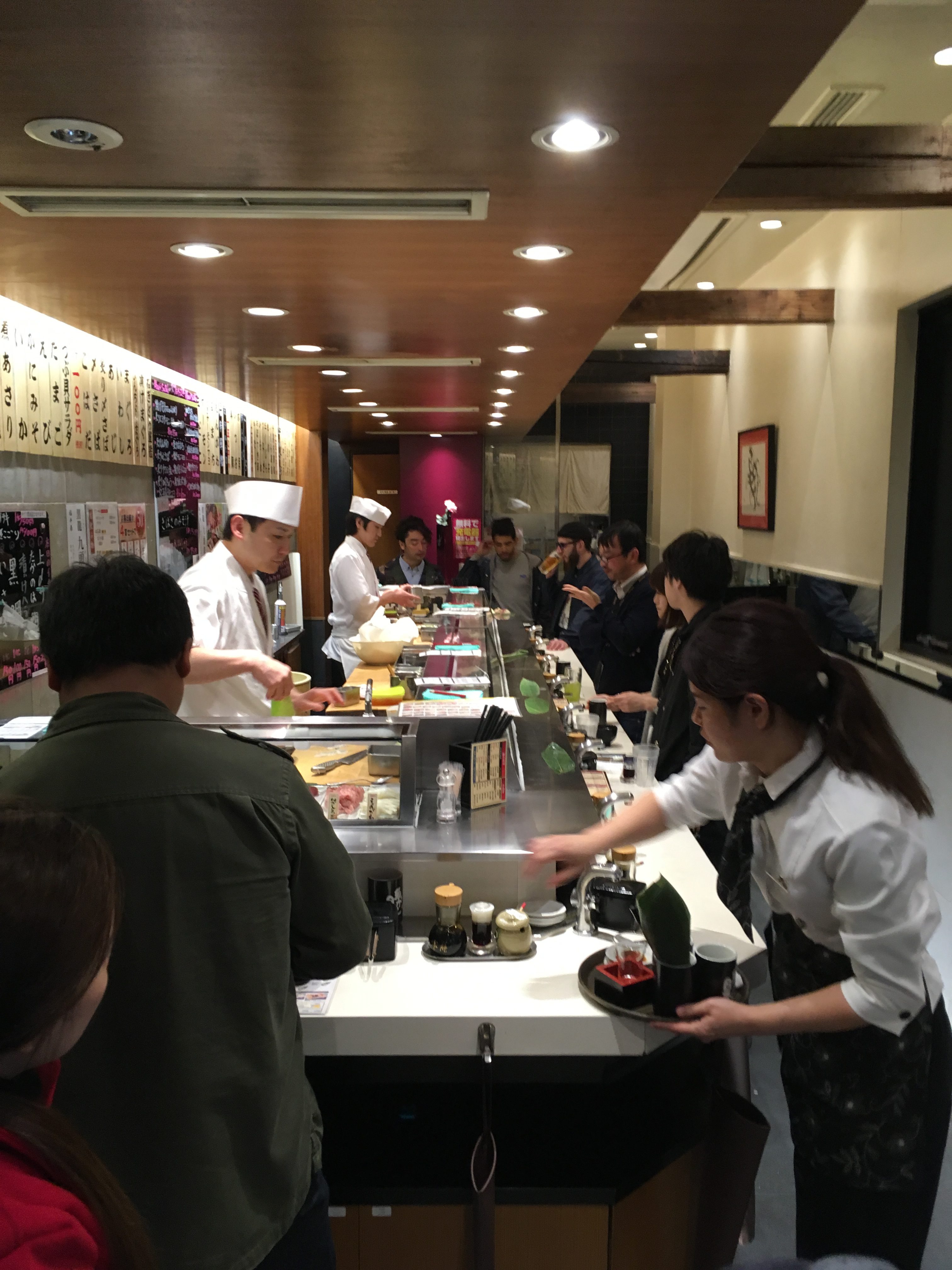
Stand up sushi bar! (source – Pulped Travel)

Sushi! (source – Pulped Travel)
4. Asakusa
The Kaminarimon (Kaminari Gate) and Sensoji Temple are predominantly what brings most people to Asakusa, in the north of the city. And with good reason too. Both are magnificent and clearly mean so much to the locals that visit them too. The avenue leading to the Sensoji is lined with a host of shops selling delicacies, crafts and souvenirs is busy with people; many of whom in traditional dress are on their way to the large incense burners dotted around the temple that are said to bring good health to those that engulf themselves in the smoke that billows from them. Before you enter the temple you can buy omikuji (a paper fortune) for 100 yen from one of the many drawers at the entrance. Naturally, you can celebrate should you get lucky. And, if you don’t get so lucky? No worries…simply tie the paper to the rack nearby and let the bad luck blow away in the wind! Get to the viewing deck at the top of the Asakusa Tourism and Culture Centre, a bold building that sits opposite the Kaminarimon, as it offers a great panoramic view over the district and towards the towering Sky Tree.
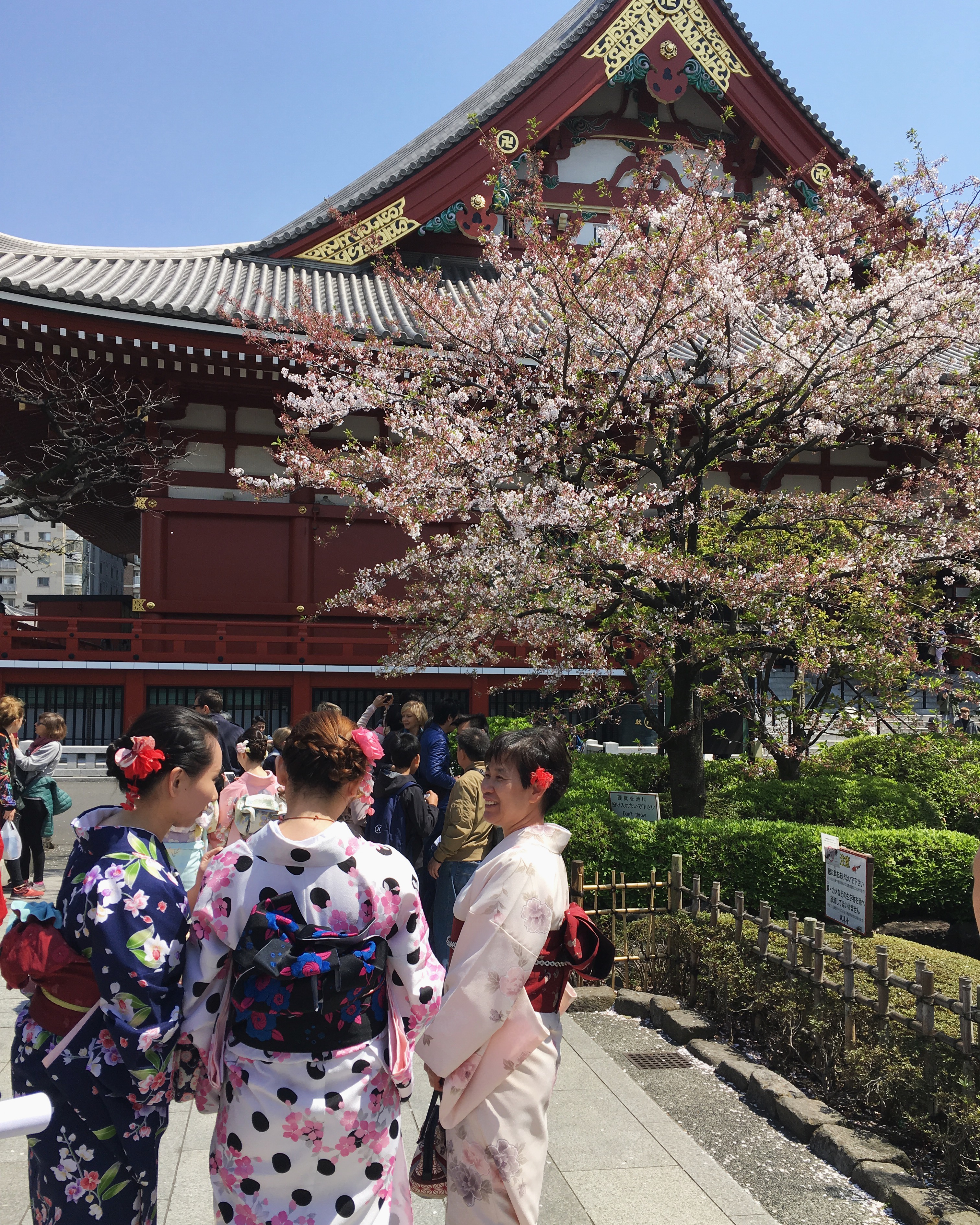
Ladies in traditional dress at the Sensoji Temple (source – Pulped Travel)

Sensoji Selfie (source – Pulped Travel)
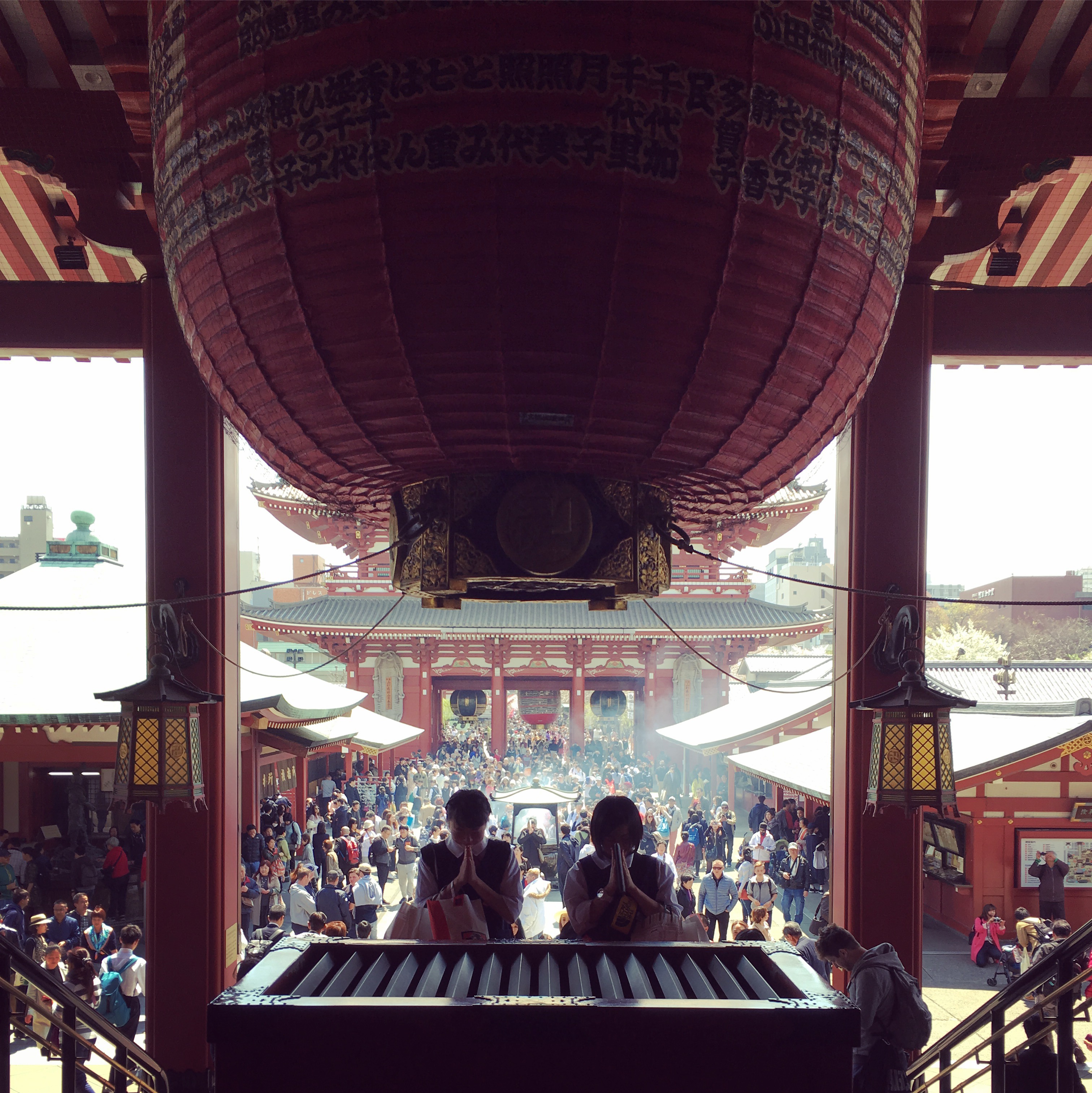
Quiet reflection among the crowds at the Sensoji Temple (source – Pulped Travel)

Pick a drawer! (source – Pulped Travel)

Bad luck blowing away in the wind! (source – Pulped Travel)
5. Ginza and Marunouchi
Welcome to high end Tokyo. This is where international businesses and boutique hotels mix with royalty, alongside every designer store imaginable. But, don’t be put off from visiting these districts if your wallet is bare. It is free to window shop and the buildings that populate the area are pretty spectacular to look at. The main tourist sight in this district has to be The Imperial Palace and Gardens. Situated on an island and surrounded by a moat, there isn’t much to see from the outside, but tours can be arranged by booking at the official website (http://www.kunaicho.go.jp/eindex.html). It is advisable to book in advance as the tours are very popular.
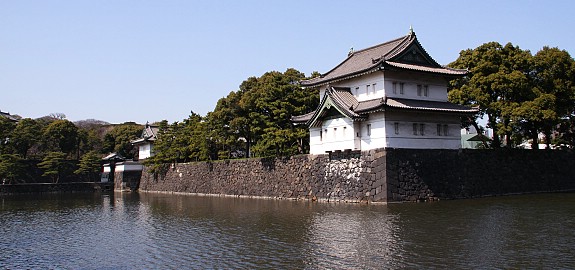
The moat and walls of the Imperial Palace (source – japan-guide.com)
Despite the perceived high cost of travelling in Japan, one of the great things about visiting the country and Tokyo (itself viewed as one of the most expensive places on Earth) it can all be quite easily avoided. Whilst exploring the Ginza area, I stumbled upon one of the many eateries selling ramen. The popularity of the place was what first got my attention, then the lovely aroma and the offers in the window pulled me straight in. Immediately faced with a huge vending machine from which to select what I wanted, I panicked at the range of options in Japanese, of course. Then, just before I turned on my heel to find somewhere I could ‘understand’ the sweet elderly waitress came over and handed me an English menu, helped me choose what I wanted from the machine and within 10 mins I was wolfing down a beautiful dish of ramen and chicken for about £3. I would highly recommend hunting out these places. You will recognise them easily thanks to the vending machine at the front of the restaurant and clientele of mostly office and construction workers dashing in and out full from their ramen slurping!
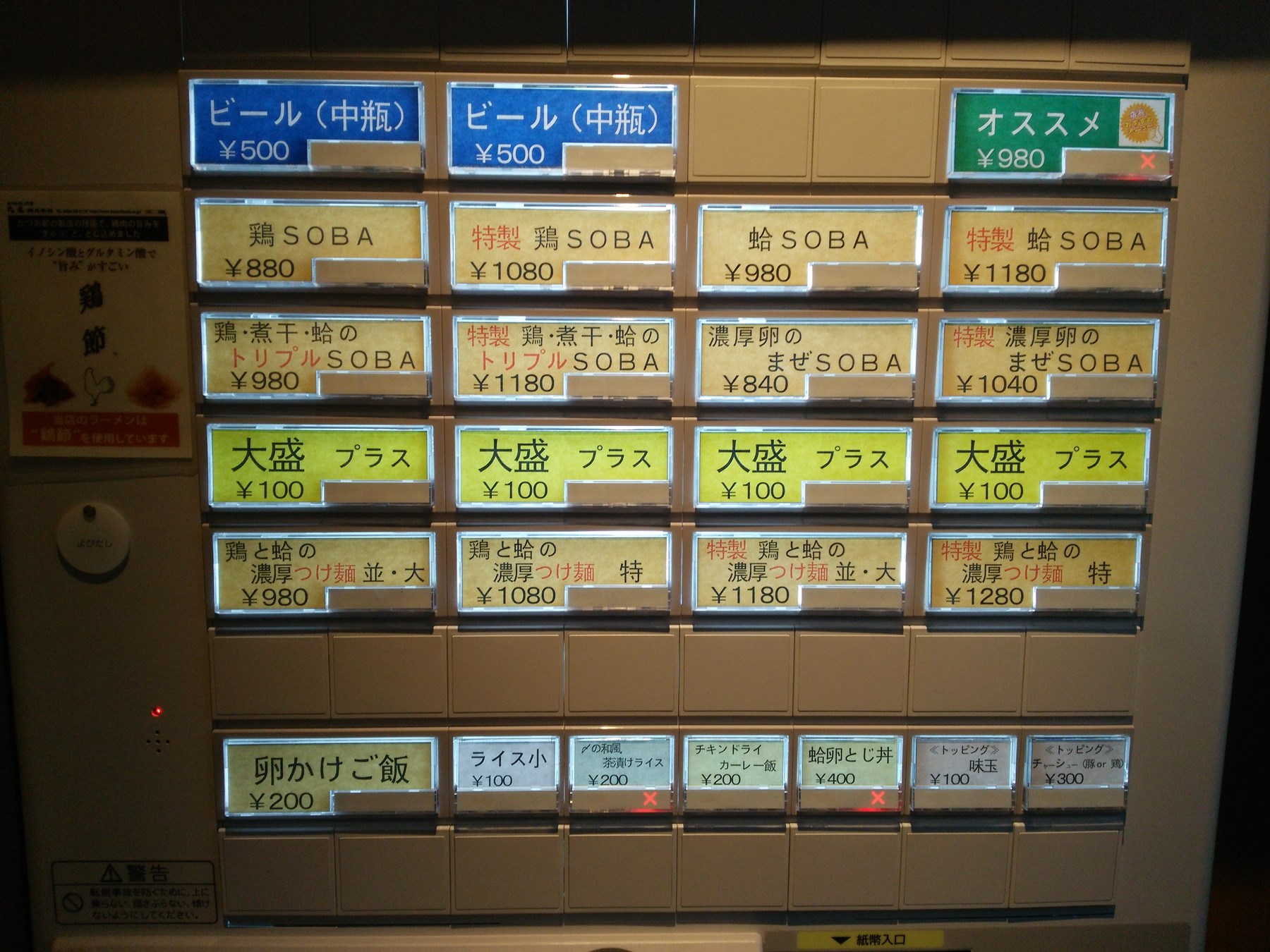
Ramen vending machine! (source – melissadreamsofsushi.com)
So, that’s it! By no means comprehensive, my guide to navigating Tokyo should help you on your way to seeing some of the major sights and experiencing this awe-inspiring, one of a kind, metropolis. Please leave your comments below about anything you think might be useful for travellers to Tokyo and, if you are heading to the Japanese capital, any questions you might have about visiting. I would love to hear from you.
 ©Pulped Travel 2017. All rights reserved.
©Pulped Travel 2017. All rights reserved.






3 Comments
Nicolialia Pizzeria
24/12/2018 at 11:27 amHey There. I found your blog using msn. This is an extremely neatly
written article. I will be sure to bookmark it and
come back to learn extra of your helpful information. Thank you for the post.
I’ll certainly return.
Cafe rule
24/01/2019 at 10:53 pmPretty great post. I jjst stumbled upon your webloog and wijshed to mention that I have really loved surfing around your weblog posts.
After all I’ll be subscribing on your rss feed and I’m hoping you
write again very soon!
Victoria
02/10/2019 at 12:00 pmWow such an informative post! I’ve never been to Tokyo but this post has definitely made me want to go. That Shibuya crossing looks insane, I need to see that. Fab pictures too 🙂